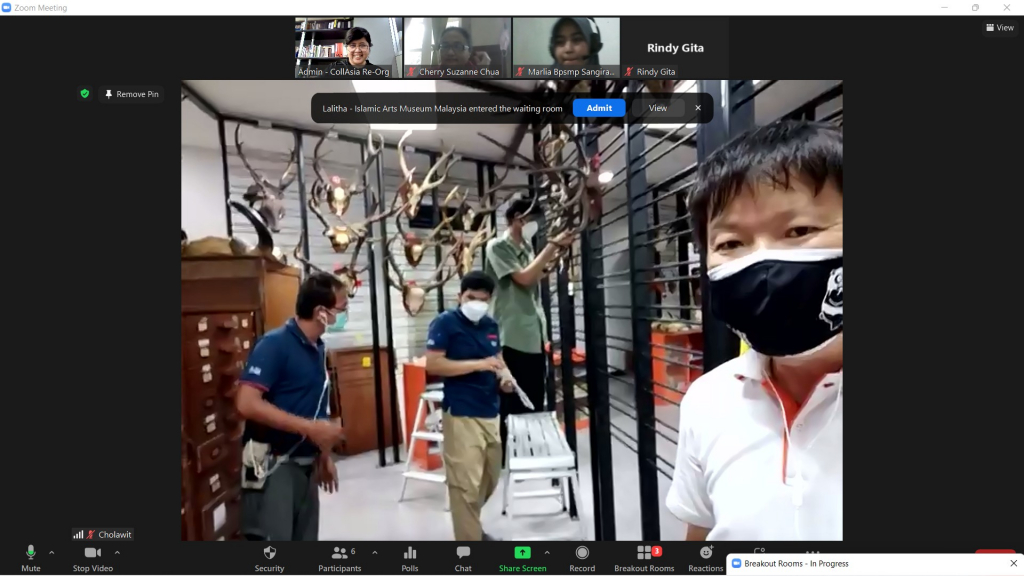 Live tour of the Thai Natural History Museum’s storage via Zoom
Live tour of the Thai Natural History Museum’s storage via ZoomMuseums in Southeast Asia have put theory into practice when it comes to managing their collections, using skills they learned at last year’s ICCROM course. The ten museums that participated in the CollAsia programme’s International Course on the Reorganization of Collections Storage in Museums of Southeast Asia were excited to implement the RE-ORG Method in their storage spaces.
Developed in the wake of the pandemic, the course was the first CollAsia and RE-ORG initiative conducted entirely online, overcoming distance and restrictions with a highly motivated course team and 20 engaged participants. Delivered in two parts, it began with modules from September to December 2021 and continued with distance mentoring through April as participants implemented their RE-ORG projects.
The museums have carefully implemented the various aspects of their projects, including: rearranging objects in storage and rethinking ways of storing them, improving maintenance procedures, updating collection databases and more.
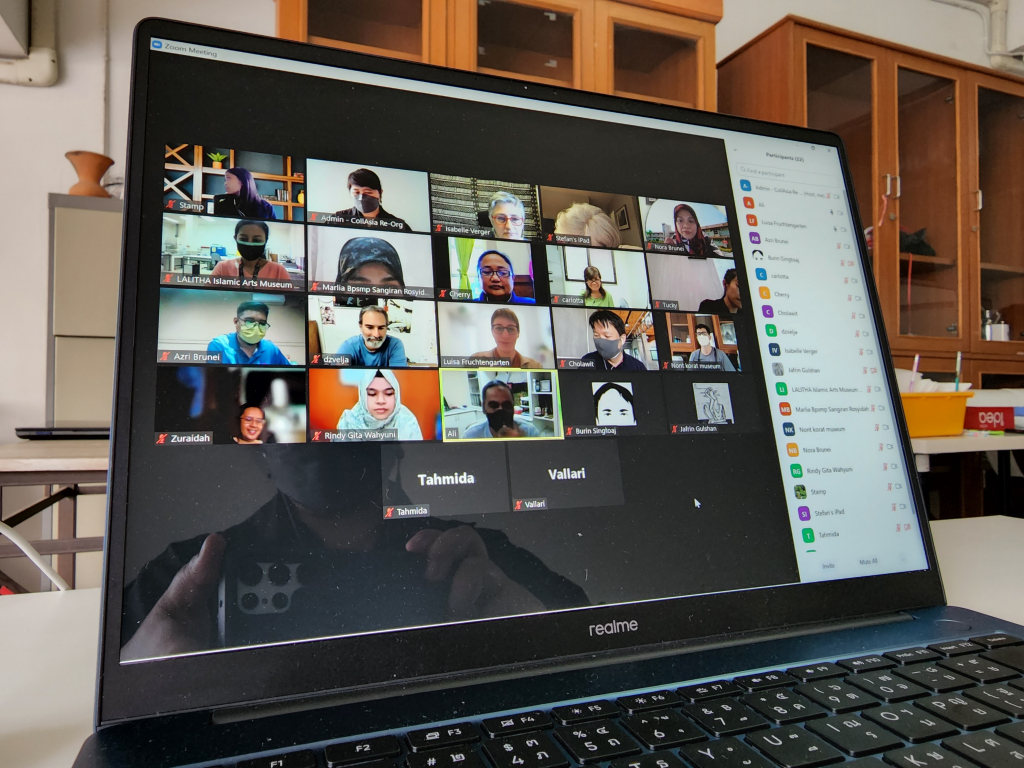 Exciting session with teaching team despite different time zones
Exciting session with teaching team despite different time zonesWe have remained engaged by helping the museums along this process; three former CollAsia facilitators, a consultant and an intern were dedicated to mentoring the participants remotely. The mentors and participants have met nearly every week: not only to exchange ideas and troubleshoot problems, but to also motivate each other and celebrate each other’s progress.
The museums and participants have appreciated our continued support and guidance and have strengthened the bonds built during the training course.
Despite physical restrictions due to the pandemic, it was still possible to forge close ties and experience each other’s cultures through technology, which is a unique characteristic of CollAsia workshops. Participants were able to take their mentors and peers on live video tours of their storage spaces.
Innovating while RE-ORGanizing
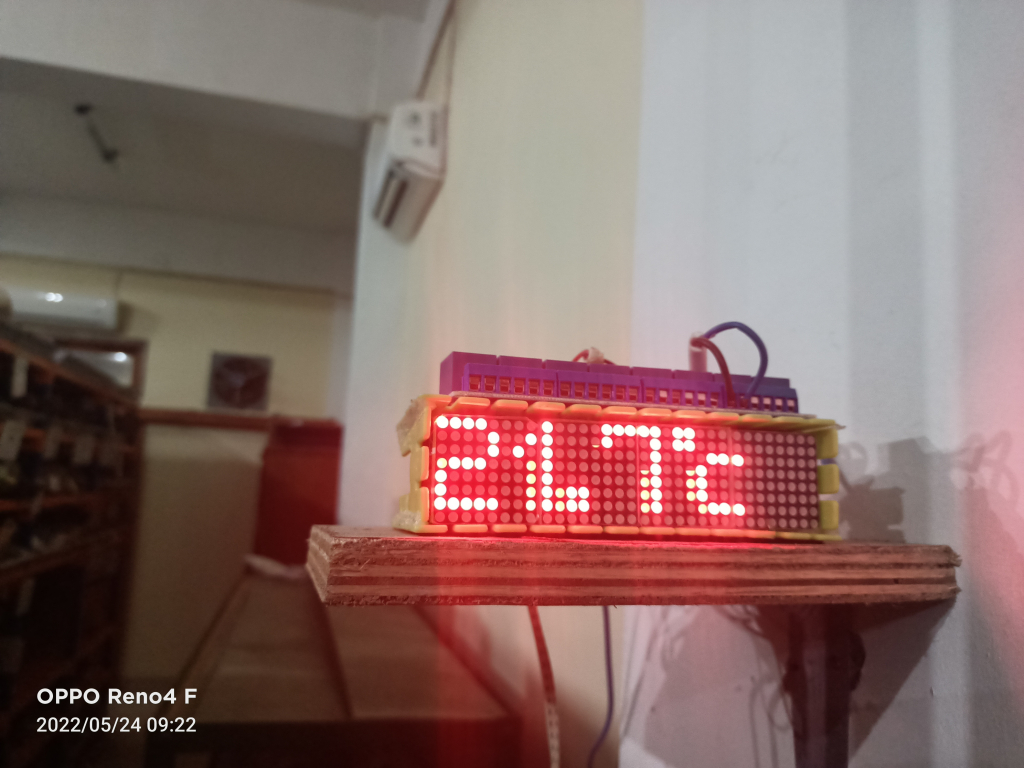 Sangiran Museum’s innovative DIY datalogger
Sangiran Museum’s innovative DIY dataloggerImplementing a RE-ORG project often leads to experimenting with new strategies to enhance and safeguard cultural heritage, in addition to simplifying heritage custodians’ daily practices.
The CollAsia–RE-ORG initiative has given participants the opportunity to have a fresh look at their existing procedures – for example, sorting objects by size or type, storage methods and cleaning schedules – and propose new solutions. One example that piqued everyone’s interest was the Thai National History Museum’s innovative approach to safely hanging a huge antelope horn. Participants from the Sangiran Museum even created a DIY automatic datalogger to monitor the temperature and humidity in their storage space.
Information sharing within the CollAsia network and beyond not only adds to everyone’s existing knowledge but also leads to the discovery of clever alternatives, as the group extends beyond the constraints of standard practices and considers local resources to increase sustainability.
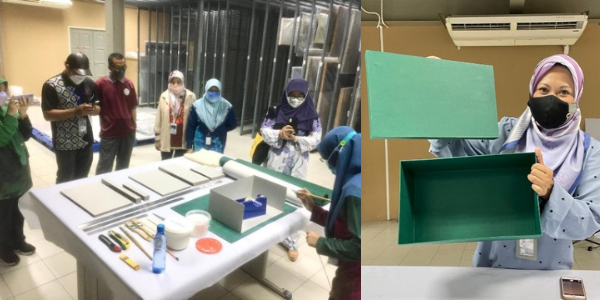 All hands on deck! Box-making at the Brunei Museums Department
All hands on deck! Box-making at the Brunei Museums DepartmentCase study: Thai museums’ shared responsibility and solidarity in RE-ORGanizing
With the easing of Covid-19 restrictions, one of the facilitators and several colleagues from the National Discovery Museum Institute (NDMI) in Bangkok were able to visit the three participating Thai museums: the Natural History Museum, the Royal Thai Army Museum and the Nakhon Ratchasima City (Korat) Museum. The team witnessed firsthand the museums’ storage systems’ transformation and advancement. For example, the Natural History Museum’s enthusiastic staff are planning to use their museum storage space for a new education programme. The Royal Thai Army Museum – which collects various items, such as weaponry, communication tools, tableware sets of the royal family and Royal Guard and field uniforms, to name a few – needed help with preventive conservation strategies; mainly with the selection of suitable materials and containers for museum storage purposes. The NDMI team assisted them with consultation and coordination, focusing on conservation-grade materials, suitable support systems for ceramic objects and even demonstrating mount-making for the uniforms. The outcome was nothing short of outstanding.
Korat Museum, a part of Rajabhat Nakhon Ratchasima University that is home to local history artifacts, faces a unique challenge – the museum has only one staff to oversee its collection and all matters related to it. The museum’s vast collection of local artifacts, dating from prehistoric times to present day, requires significant support in storage. The collaboration between NDMI and the Korat Museum began from the beginning of the training via online communication. During the implementation phase, the team could only work four days at a time, but were able to expand their operation with the assistance of student interns, who helped with the museum’s basic registration and accessioning, preliminary cleaning for non-risk objects and background knowledge of local objects.
Due to limited time, only three trips to the Korat Museum were possible. Within this period, the NDMI team had a huge responsibility of completing the assigned tasks and filling the missing gaps during online communication and, more importantly, acquiring suitable local materials for storage. Despite the time constraints, the NDMI team diligently documented and posted every step of the projects’ progress on the university’s website and social media platforms. In the future, the storage will be a part of the studying site for the university’s students. The success of this project would not have been possible without the continued support from the university’s management and the enthusiastic spirit of the CollAsia network.
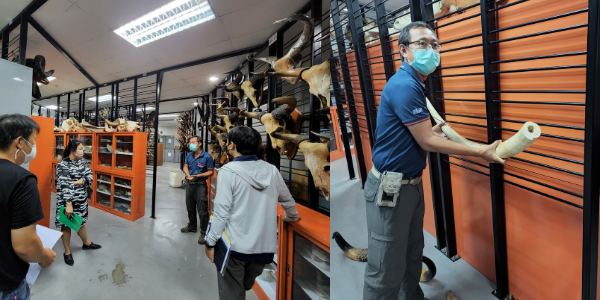 Visiting the Natural History Museum, Thailand
Visiting the Natural History Museum, Thailand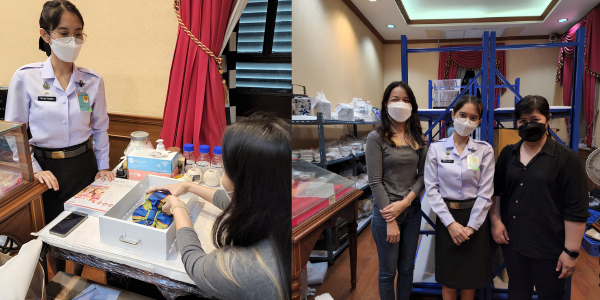 Consulting the Royal Thai Army Museum
Consulting the Royal Thai Army Museum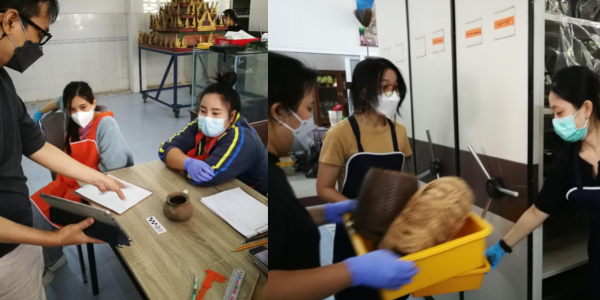 Interns in attention - registration and relocation of artifacts
Interns in attention - registration and relocation of artifacts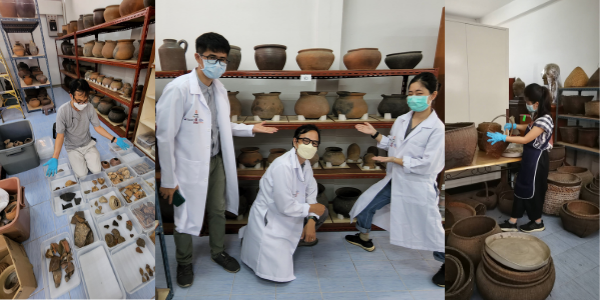 The collection team in action!
The collection team in action!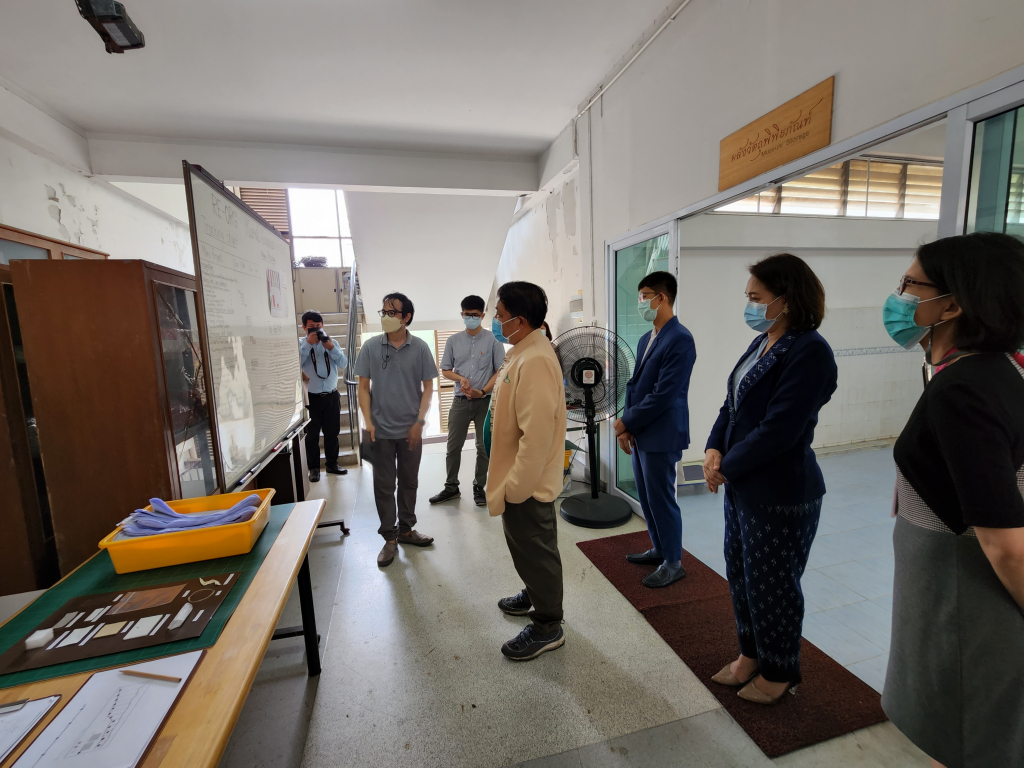 Welcome Vice-Rector of the Rajabahat Nakhon Ratchasima University!
Welcome Vice-Rector of the Rajabahat Nakhon Ratchasima University! 